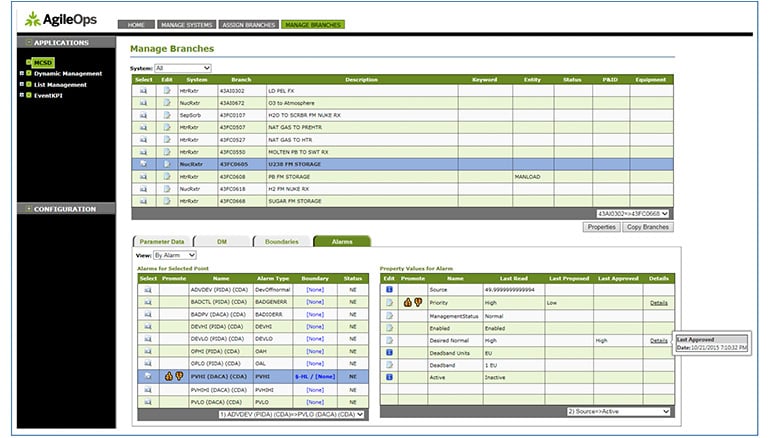Why You Should Implement an Alarm Management System
All too often, customers implement process control systems with little attention given to alarm management. The near-zero engineering effort required to create alarms, combined with many new alarm sources, has contributed to their proliferation. The result is an increased risk for alarm floods and nuisance alarms, with consequential adverse effects on product quality, process efficiency, equipment protection, environmental incident, and personnel safety.
Recent Impact of Industry Standards on Alarm Management
In 2016, the ISA-18.2 Management of Alarm Systems for the Process Industries (ISA-18.2 for short), which provided a lifecycle framework for owners to manage every aspect of the alarm system, was revised and updated. The current ISA-18.2 presents techniques and strategies to help end-users address the most common alarm management issues. ISA-18.2 alarm management strategies are "recognized and generally accepted good engineering practice" by insurance companies and regulators.
The ASM Consortium reported that peak alarm rates are not closely correlated with the degree of rationalization. The impact is that critical alarms may not be addressed in a prescribed way, and the boundary that it was protecting gets violated. During these flood events, the alarm summary screen can be so overloaded that alarms scroll off the display without an operator's oversight.
One of the critical practices described in ISA-18.2 is alarm rationalization, which is a process for reviewing and documenting the alarms systematically, to ensure that they are genuinely needed and designed to help the operator diagnose and respond to abnormal situations. The primary goal of an alarm rationalization initiative is to ensure that every alarm is a quality alarm.
ISA-18.2 defines a quality alarm as "a unique announcement of an abnormal event that requires necessary operator action to avoid a negative consequence." Practices have emerged with the intent to reduce alarm floods. ISA-18.2 defines an alarm flood as an event that triggers more than ten alarms annunciating within a 10-minute period.
Alarm Rationalization Defined
Cornerstone defines dynamic (state-based or mode-based) rationalization as alarm rationalization for more than one process state (no alarms are triggered when the event does not satisfy the "Relevant" keyword). Static rationalizations can become dynamic when the question "When?" is added to the discussion for each point.
As a result of this extra rigor, costs may increase when performing dynamic rationalization versus static rationalization. In this scenario, modern alarm management software programs come into play. These new platforms are control system agnostic and can be deployed regardless of the control system(s) currently installed within a complete enterprise. One example of a modern , agnostic alarm platform is Emerson's AgileOps Alarm Management solution.
How the AgileOps Suite Works
Emerson’s AgileOps alarm management software utilizes a Master Control System Database (MCSD). An MCSD provides a master alarm database as required by ISA-18.2, including currently approved alarm attributes, a rationalization tool with documentation of complete results, and a comparison of the control system configuration against the approved values. The MCSD can also tie together all the rationalization data (causes, consequences, and expected responses), providing operators with real-time help information.
The AgileOps software solution also incorporates Dynamic Management (DM) capabilities. Dynamic alarm management continuously monitors the control system to detect changes in operation using pre-designed case logic. It automatically writes pre-determined alarm attribute changes to the control system upon case changes. There are several benefits to dynamic alarm management.





